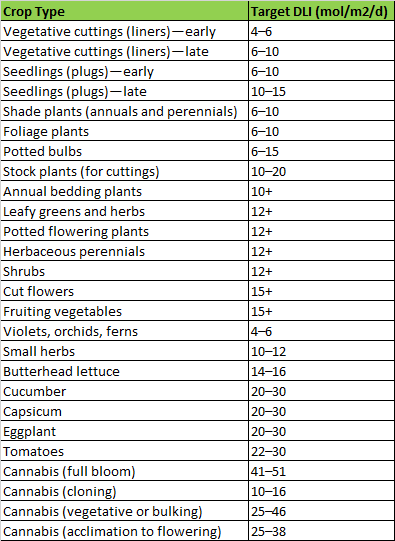What is the Daily Light Integral in Crop Monitoring?
The ALTA® by Monnit Photosynthetically Active Radiation (PAR) Light Meter senses and delivers two crucial readings, measurements, or assessments—photosynthetic photon flux density (PPFD) and daily light integral (DLI). This article will focus on what DLI is and how its monitoring can benefit your commercial growing, greenhouse, and grow house light operations.
First—What is PPFD?
To know PPFD is to understand DLI better. For the measurement of light within the PAR light spectrum—the ideal wavelength for photosynthesis—both DLI and PPFD measurements are needed and related. The amount of PAR a light produces is photosynthetic photon flux (PPF).
So, PPFD is the amount and intensity of PAR light that lands on a square meter of crops each second—measured in micromoles (one micromole equals 62 quadrillion photons) per square meter per second (µmol/m2/s). Meaning, PPFD is how much PPF is hitting each square meter of your crop at any given second.
Learn more about PPFD in our article here.
Now—What is DLI?
With an understanding of PPFD, you can think of DLI as the buildup or accumulation of PPFD over an entire day. This means DLI is the amount of PAR that lands on a square meter surface or crop canopy over 24 hours. It’s measured in moles (one mole equals one million micromoles) of light per square meter per day (mol/m2/d).
You can envision DLI as sand running from the top of an hourglass to the bottom. Rather than in an hour, picture the grains of sand falling over 24 hours. The grains of sand represent moles falling, landing, accumulating in a square meter, and absorbing into a plant.
The PAR Light Meter’s DLI reading measures the total amount of PAR received by crops in a day. The formula for calculating DLI is: µmol/m2/s (or PPFD) x (3600 x photoperiod) / 1,000,000 = DLI (or moles/m2/day).
The right amount of DLI is vital.
As a function of PAR light intensity and duration, DLI is important to measure because the amount of light your plants receive during a day correlates to plant growth, quality, and yield. More specifically, PAR light fuels all plant processes, including root growth, flowering, and vegetation.
With the ALTA PAR Light Meter, you can measure a greenhouse’s ambient DLI or sunlight and determine how much supplemental grow lighting you need to meet DLI for specific crops. Other factors can affect your overall DLI, including light intensity or PPFD, latitude, season, shading, glazing material, cloud cover, and length of natural sunlight.
Managing and monitoring DLI within optimal PAR light parameters can be done specifically for your crop type. Light settings or DLI categories in iMonnit range from very low to high light to full sun.
Generally, with the right amount of DLI for your particular crop, you can prevent problems that come from too little light—leggy, spindly, or stretched stems, smaller yellow or leaves, brown-edged leaves, low dry leaves, and more. With too much light, you can burn leaves, buds, and stems partially or in patches, singe leaf tips, produce harmful free radicals, cause cell death, kill buds, flowers, and leaves, and more.
Precise DLI for each crop type is critical because both too little and too much light will result in a much smaller yield.
Indoor growers can use DLI to optimize operational costs, growth, and yield.
Plant quality improves with optimized DLI. Many crops develop more substantial branches, more robust stems, abundant flowering, and thicker, more efficient roots due to optimal DLI for their type.
Greenhouse, grow house, and grow room owners can have high electricity bills that inhibit their growth operations. But by better managing and optimizing the DLI using the PAR Light Meter, there can be savings across their growing processes and facilities. Every crop has an optimal DLI, so knowing it and fine-tuning grow lighting systems can help ensure healthy growth, increased yield, and reduced energy costs.
Please refer to this chart to determine your ideal DLI monitoring settings per crop type.

The chart provides suggested DLI ranges for crops grown in controlled environments. The values are subjective and situational and may vary depending on species’ shade tolerance and environmental factors such as ambient sunlight, temperature, and CO2.
Learn more about our PAR Light Meter in its user guide and datasheet.